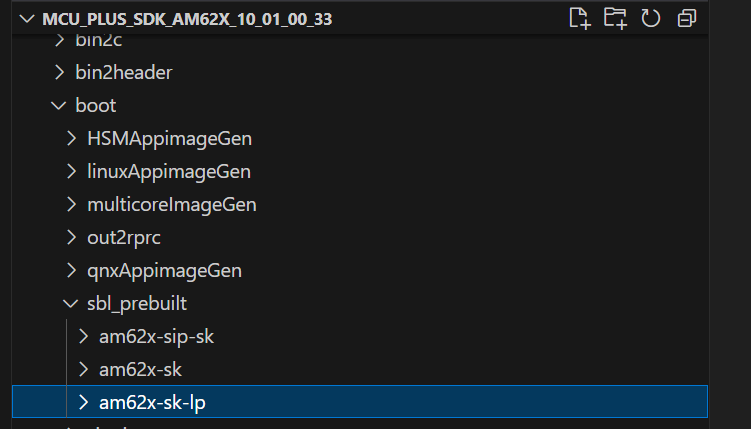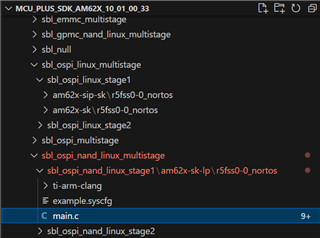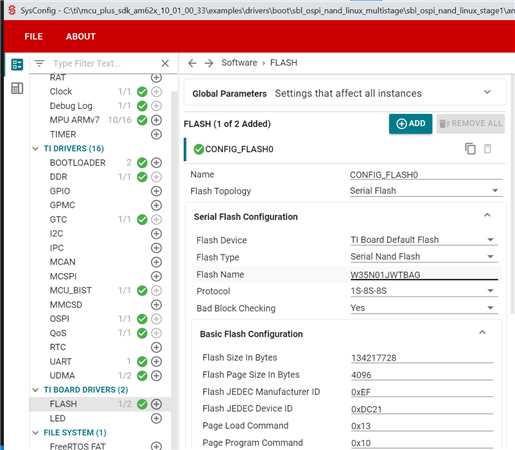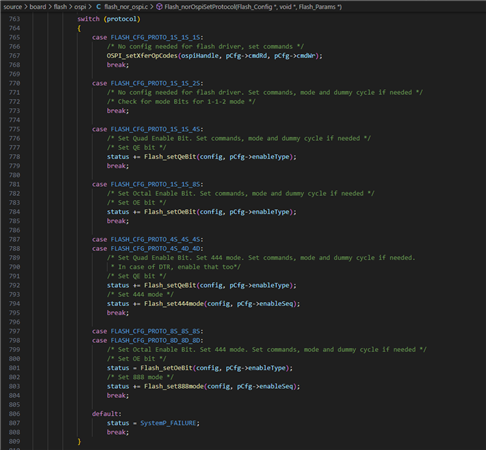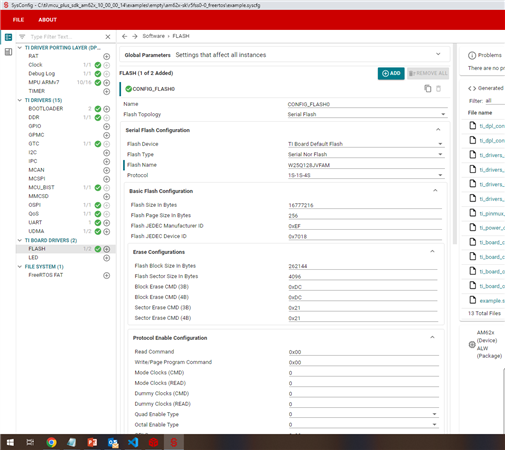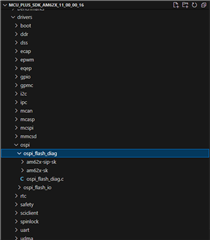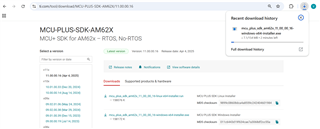Thread 中讨论的其他器件:UNIFLASH、 SYSCONFIG
工具/软件:
尊敬的团队:
我正在使用 MCU_SDK 10版本、对于 am62-LP-SK 定制器件、我更改了 示例。 SYSCFG 路径 C:\ti\mcu_plus_sdk_am62x_10_00_00_14\examples\drivers\boot\sbl_ospi_linux_multistage\sbl_ospi_linux_stage1\am62x-sk\r5fss0-0_nortos 和 board_IpaddrReginit.h C:\ti\mcu_plus_sdk_am62x_10_00_00_14\source\drivers\DDR\V0\am62x 中的文件 soc。
使用 cmd 编译 MCU_SDK make -s board=am62x-sk all、 并将 ~/ti/mcu_plus_sdk_am62x_10_00_00_14/tools/boot/sbl_prebuilt/am62x-sk/default_sbl_ospi_linux_hs_fs.cfg 用于我的 NOR 芯片(Winbond)。 此外、还编译 default_sbl_ospi_linux_hs_fs.cfg 中提到的所有 appimage。
- sbl_ospi_linux_stage1.release.hs_fs.tiimage
- sbl_ospi_linux_stage2.release.appimage.hs_fs
- ipc_rpmsg_echo_linux.release.appimage.hs_fs
- HSM.appimage.hs_fs
- ipc_rpmsg_echo_linux.release.appimage.hs_fs
- linux.appimage.hs_fs
- u-boot.img
但我没有使用 Uart_uniflash.py 方法、而是使用 DFU 方法刷写上述所有映像。 但面临下一个问题。
案例1: 完成代码后、我在函数中发现了这一点 bootloader_parseMultiCoreAppImage 被调用 bootloader_verifyMulticoreImage (句柄) 由于 certzise = 0 (零)、检查失败并获得状态= SystemP_FAILURE。
{

